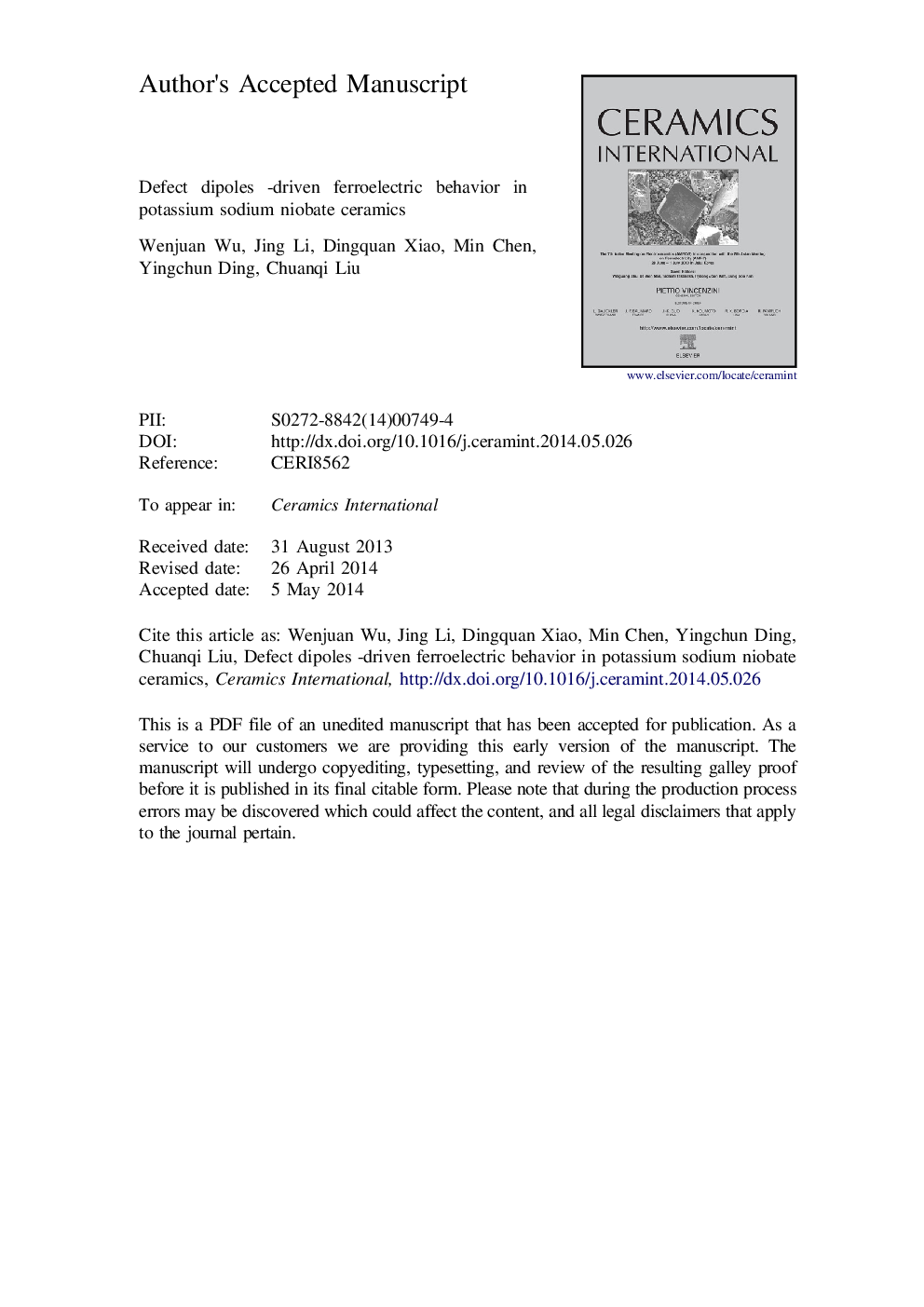| Article ID | Journal | Published Year | Pages | File Type |
|---|---|---|---|---|
| 10625321 | Ceramics International | 2014 | 20 Pages |
Abstract
K0.48Na0.52NbO3-0.05 mol% Re2O3 (Re=La, Nd, and Yb) ceramics were prepared by a conventional solid-state sintering method, and defect dipoles-induced ferroelectric behaviors have been investigated. All ceramics show an orthorhombic phase at room temperature. The tolerance factor, X-ray diffraction and Raman spectra analysis show that La3+ and Nd3+ predominantly dissolve in (K, Na) sites and induces the unit cell shrinkage, while Yb3+ occupies both (K, Na) and Nb cationic sites and causes the unit cell expansion. Due to defect dipoles polarization, PDA and PDAB, KNN-Re2O3 ceramics display different ferroelectric properties. Ferroelectric order of KNN-Yb2O3 ceramics were stabilized by PDAB, so their ferroelectric properties (Pr~32.7 μC/cm2, Ec~7.6 kV/cm) and thermal stability were improved. A constricted hysteresis loop in KNN-Yb2O3 ceramic at a high measurement temperature is formed because of the domain pinning from Nb5+, K+ and Na+ ions.
Related Topics
Physical Sciences and Engineering
Materials Science
Ceramics and Composites
Authors
Wenjuan Wu, Jing Li, Dingquan Xiao, Min Chen, Yingchun Ding, Chuanqi Liu,
